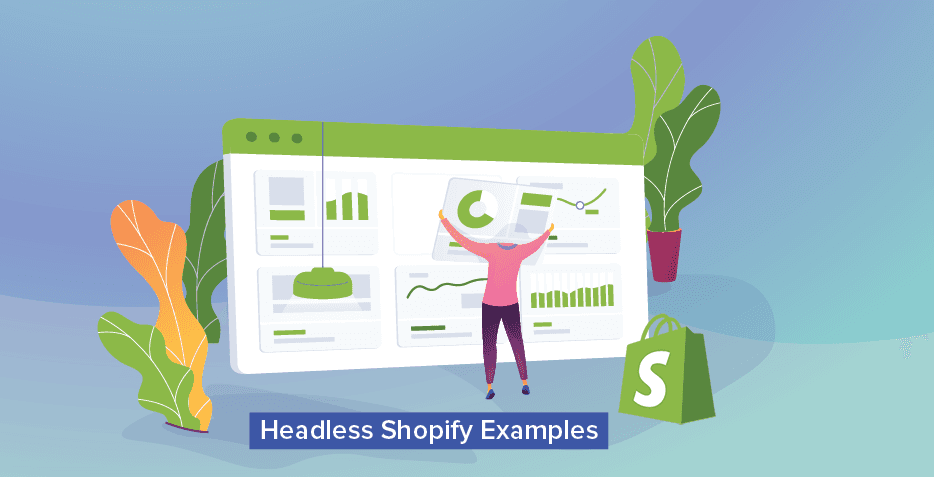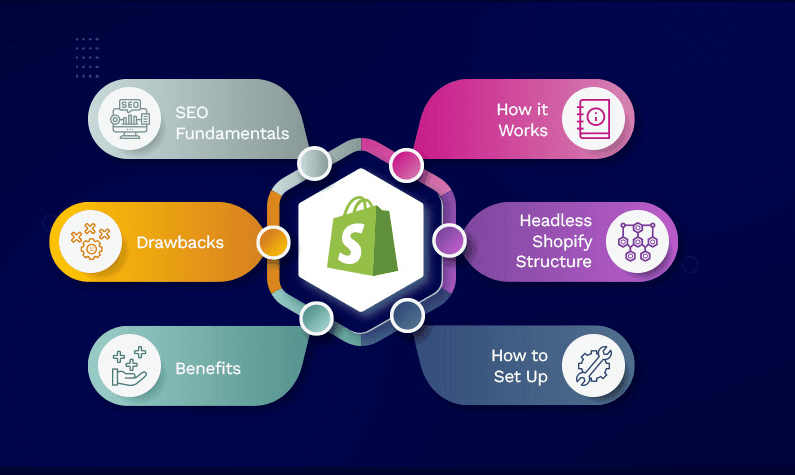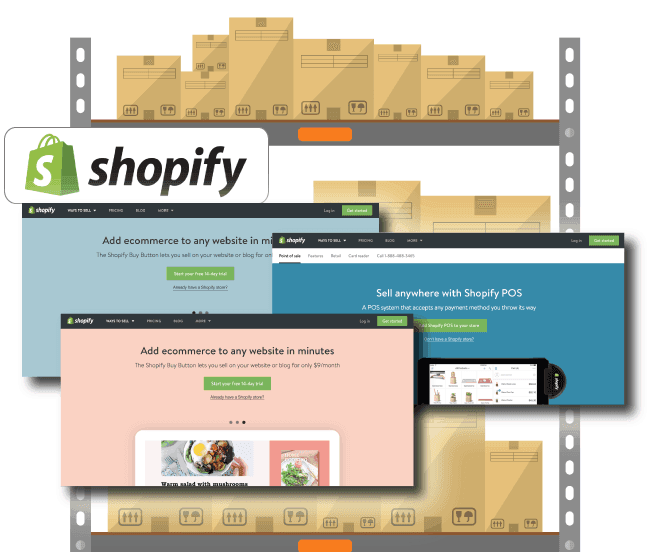Best Headless Shopify Examples

How do you meet the demands of modern customers who will leave your brand after just one negative experience? Based on the findings of this PwC report, one in every three customers who love your brand will quit after just one bad experience. Meanwhile, 92% will completely abandon your company after two or three negative interactions.
Positive experience is everything as customers become more accustomed to buying products online. With more than 26 million ecommerce sites worldwide, online shoppers have more options than ever. But what does that mean for you? Stiff competition!
Like any ecommerce store, you must constantly strive for innovation to meet modern customer demands. For many businesses, going headless is the ideal way to boost performance and speed and enhance SEO. It’s the ideal way to achieve the desired customer experience.
Let's look at the best headless Shopify examples: the leading brands achieving excellence using the headless Shopify platform.
Headless Shopify Overview
We have talked a bit about headless ecommerce Shopify in our previous posts. But let’s save you the legwork and provide a brief overview.
Headless Shopify is one with a separate front-end layer from the powerful Shopify back-end infrastructure.
Every ecommerce website has two main components or sides: the front end and the back end. As the name suggests, the front end (head) is the side with the user interface (UI). It comprises everything that is visible to the site’s users.

On the other hand, the back end is the side that exists beneath the surface. Consider this as the back-office equivalent of your ecommerce website. It is the part comprising the business layer responsible for handling inventory management, order processing, user authentication, payment gateway integration, and processing shipping and fulfillment.
The back end of any Shopify example website handles the business side of the website, so you can look at it as the ecommerce engine.
When you buy Shopify, you get the back-end functionality by default. You will get the front end to customize into your storefront if the Shopify is a standard or traditional version.
However, for a headless Shopify solution, no corresponding front-end solution comes with the purchase. This is why a headless Shopify is so-called. You must, therefore, create your custom Shopify storefront and connect it with the back-end solution via APIs (application programming interfaces).
This is the process that all the headless Shopify examples we’ll examine in this write-up have gone through.
Now that we have the background out of the way, let’s dive right into the Shopify example websites.
10 Best Headless Shopify Examples
We started by pointing out that going headless is an ideal way to improve your Shopify website performance and achieve a competitive advantage. But how does headless commerce improve your store’s performance?
Since a headless website decouples the front end from the back end, it effectively reduces the amount of code to be loaded when a user requests a web page. An Amazon study determined the average page load time of a headless site to be a mere 0.8 seconds against 3.21 seconds of a traditional website.
Why is this important? People love fast-loading websites. The increased website performance and speed effectively boosts the user experience and increases revenue.
These explain why the following top brands have shifted from traditional website architecture to headless Shopify architecture.
Chilly’s
Chilly’s sells reusable bottles to customers across different countries. To satisfy this vast demographic of customers, the company went headless with its Shopify installation, integrating headless DatoCMS with Shopify Plus.
DatoCMS is a leading CMS (headless content management system) designed for businesses that manage and distribute content at scale.
As you already know, Shopify Plus is an enterprise ecommerce platform designed for high-growth brands and merchants with high annual revenue levels.
Together, these headless solutions make a powerful combination.
With DatoCMS powering content and Shopify Plus handling the business side of things, Chilly's saw significant gains from the get-go. The improved performance and speed, faster development, and enhanced SEO drove the company’s revenue through the roof with an +18% increase in Conversion Rate year-over-year (YOY).
As part of its headless ecosystem, Chilly’s now leverages a PWA (progressive web app) to improve user experiences.
It serves 36 territories and supports up to 10 different languages. It also supports various currencies consistent with the many countries it serves—all from a single CMS, thanks to an API-first approach.
Chilly’s has one of the best homepage title, Shopify examples in the ecommerce world. Its powerful CMS serves every new customer with unique, localized content on dynamic pages based on the customer acquisition path.
Chilly's is an excellent example of how headless commerce can simplify and streamline the localization of content.
Frank Body
Frank Body is another great headless Shopify success story. It is a skincare brand boasting a cult-like following, partly thanks to the merchant’s timely adoption of headless Shopify.
Using headless Shopify helped Frank Body rank highly in search engine results pages (SERPs), leading to increased website traffic.
Added to the site’s unique design and compelling display, it was only a matter of time before customer-generated content turned the ecommerce website into a favorite knowledge hub and shopping destination.
Frank Body’s front-end content combines dynamic buttons, GIFs, and static images, made more appealing by the meticulous use of white space.
Victoria Beckham Beauty
If you take an interest in celebrity stories, then the name Victoria Beckham should ring a bell.
Victoria Beckham is a fashion icon and influencer, which played a role in the brand’s popularity. However, Victoria Beckham Beauty has something else to thank for its massive business success: headless Shopify.
The ecommerce website is built on Shopify Plus, powering the business side, while Contentful CMS handles content management and distribution.
Both Contentful CMS and Shopify Plus are incredibly powerful headless solutions, giving the website a best-in-class performance.
Thanks to the powerful platform and CMS combination, the website handles surges in traffic and high-resolution videos and images seamlessly with no downtime.
Verishop
Verishop has one of the widest selections of retail items in the ecommerce world. With such a wide range of items comes a diverse market.
Thanks to Shopify’s headless architecture, Verishop has a customizable URL structure that allows it to tailor the shopping experiences for each customer segment. The brand-specific URLs are SEO-friendly and render seamlessly on any UI display.
Despite having numerous products in every category, the Verishop web pages boast some of the fastest speeds, leading to a great user experience and a high customer satisfaction index.
Yoga Girl
You guessed it: Yoga Girl is a yoga product website—for female clientele.
Like Victoria Beckham Beauty, Yoga Girl combines headless Shopify's power with Contentful CMS's efficiency to deliver the best in speed, performance, and SEO-friendliness. The ecommerce website has a clean user interface and lots of helpful functionalities.
Once customers interact with the website on any digital touchpoint, the APIs kick on to pull content embedded in the CMS repository beneath the API layer. Meanwhile, they are guided through the standard Shopify checkout process seamlessly without giving away the complexities beneath the surface.
Despite selling a wide range of products, jewelry, and courses, the headless architecture ensures the experience is seamless for every customer.
Koala
Koala is a leading mattress brand and a top player in Australia’s retail market. It uses Shopify Plus integrated with a headless content management system, Contentful, to deliver seamless shopping experiences to the user.
As the company points out, decoupling the back-end and front-end layers of the website allows their teams to focus on different areas of the website independently. Content managers can focus on content while developers focus on the technical aspects of the website.
Koala users also enjoy offline shopping through its flexible PWA offering. Overall, going headless has allowed the brand to create new pages, update products, and manage content much faster and more efficiently.
Inkbox
Inkbox is a temporary tattoo company based in Canada and one of the best headless Shopify examples online. This ecommerce website is a true beneficiary of headless Shopify’s excellent scalability.
With a growing demand for Inkbox products, a headless solution came in handy and provided the ideal way to expand and serve every customer in a more personalized manner.
Going headless means the merchant can customize the front end into flexible UIs for their target clientele while leveraging Shopify’s powerful back-end functionality for a truly omnichannel presence.
The website is SEO friendly, with content that includes, among others, click-to-play videos, auto-playing videos, and a 'Shop the Look' section. Inkbox is now one of the fastest-growing and most successful tattoo brands on the planet, attracting more than a million monthly visitors.
Blue Diamond
You’d be forgiven to believe that Blue Diamond might be selling the hardest known natural substance—in its blue glory. No, the brand has nothing to do with gemstones. Instead, it’s all about delicious almonds and almond-based products.
It went headless after more than a decade on the market to empower it for modern challenges—it was an excellent decision.
The almond products manufacturer now has a React-based customer-presentation layer sitting on a headless Shopify back end. They also use a headless Contentful CMS to manage and deploy content across their storefronts.
This integrated approach has created a unified and seamless customer journey through the store, leading to increased organic traffic and decreased bounce rate.
Bamford
British label Bamford adopted headless Shopify in a move to reflect their customer experience while maintaining seamless navigation, communication, and shopping. This involved re-platforming to transform the entire site’s architecture.
Usually, WooCommerce and Shopify face stiff competition among users who tend to be divided between these popular ecommerce platforms. For Bamford, headless Shopify prevailed as the clear winner, influencing their move away from WooCommerce to Shopify.
Like many headless Shopify examples in our discussion, Bamford uses Contentful as a headless CMS for their content management.
The result is a clean UI and a fast, SEO-friendly ecommerce website with tons of satisfied users.
Allbirds
Allbirds experienced exponential growth in website traffic before going headless. A traditional ecommerce website built on a legacy platform is never the best option at scale. The monolithic architecture can be inflexible and seriously limiting when the business grows.
Thankfully, the merchant had the presence of mind to go headless on time.
In addition to solving the increased traffic problem, headless Shopify also boosted the site’s speed and introduced flexibility to the site’s front end. The brand now excels at personalizing the experience for every customer, thanks to a decoupled React-based customer presentation layer.
Is Shopify only for Ecommerce?

Shopify is an exclusive ecommerce software solution loaded with business features, but it is not limited to ecommerce.
So, is Shopify only for ecommerce? The short answer is no. You can still use the Shopify platform to build a non-sales-focused website. The platform is adaptable to various website types, not just for ecommerce.
However, we would not recommend going in that direction. The primary purpose of Shopify is to power ecommerce businesses. It is loaded with tools and apps tailored specifically to facilitate online business, especially service-based ones. Using it for standard websites would be suboptimal.
Recap of the Best Headless Shopify Examples
What did we just learn in this conversation? Going headless is an excellent way to improve your ecommerce site’s performance and achieve a competitive advantage. Many brands have done so, choosing headless Shopify and sometimes integrating it with a headless CMS like Contentful.
Popular headless Shopify examples include the following:
Chilly’s
Frank Body
Victoria Beckham Beauty
Verishop
Yoga Girl
Koala
Inkbox
Blue Diamond
Bamford
Allbirds
Next, we’ll look at headless Shopify pricing to help you determine the budget estimates for your headless initiative.
If you are looking for help with your headless Shopify development, contact our experts for a custom solution.
